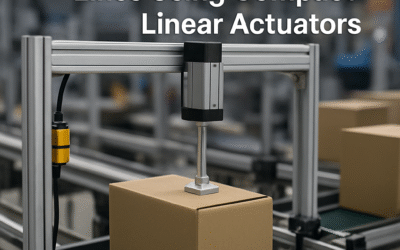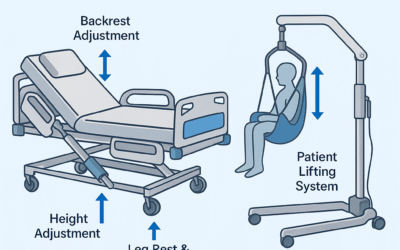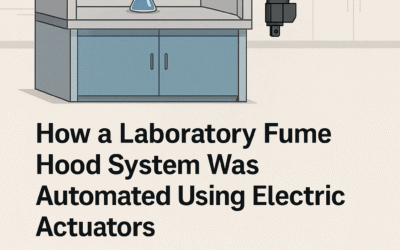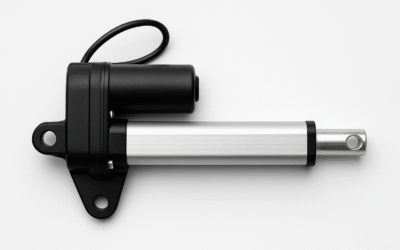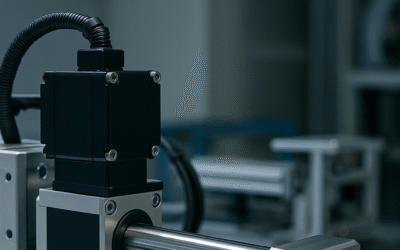BlogS
Automating Packaging Lines Using Compact Linear Actuators
On the factory floor of a mid-sized FMCG company in Coimbatore, a packaging line buzzed along at full speed. Cartons slid across the conveyor belts, labels were being applied in perfect alignment, and flap-folding machines sealed the boxes with remarkable precision....
Electric Actuators in Medical Beds and Patient Lifting Systems
In today’s healthcare environment, where efficiency, patient comfort, and safety are paramount, electric actuators have become a game-changer in hospital equipment — especially in medical beds and patient lifting systems. These actuators offer smooth, precise, and...
Laboratory Fume Hood System Was Automated Using Electric Actuators
In early 2023, a leading pharma R&D lab in Bengaluru approached us with a recurring issue — their laboratory fume hood systems were completely manually operated. Researchers had to lift and lower the glass sash multiple times a day to control airflow and exposure...
Optical Tracking System Using Linear Actuators
Earlier this year, our team received a call from a defense contractor based in Hyderabad. They had a specific requirement — a stable optical tracking platform that could monitor movement across a wide field of view, even at extreme zoom levels. Their current setup...
Electric Linear Actuator in Sports Ground Equipment Manufacturer
It all started when Mr. Rajeev, a third-generation entrepreneur running a sports equipment manufacturing unit in Coimbatore, was facing a recurring challenge. His company supplied automated goalpost systems, retractable cricket nets, motorized basketball hoops, and...
High-Force Electric Linear Actuators for Robotic Impulse Push Applications
When the robotics team at Nexobotics Lab set out to design their latest automation project — a robot that could push objects with short bursts of high force — they faced a mechanical challenge that kept stalling their progress, Electric Linear. The concept was simple:...
Frequently Asked Questions(FAQ)
What is a linear actuator?
A linear actuator is a device that converts rotational motion into linear motion. It is used to move objects in a straight line
What are the benefits of using a linear actuator?
The benefits of using a linear actuator include precise and controlled linear motion, compact size, easy installation, and efficiency.
How do I install and maintain my linear actuator?
The installation and maintenance of a linear actuator will depend on the specific model and type. Refer to the manufacturer’s instructions for installation and maintenance guidelines.
What safety precautions should I take when working with linear actuators?
Always follow the manufacturer’s instructions and safety guidelines when working with linear actuators. Ensure that the actuator is properly secured and that the power source is disconnected before working on the actuator.
What is the difference between a linear actuator and a rotary actuator?
A linear actuator moves in a straight line, while a rotary actuator rotates around an axis. Linear actuators are used when linear motion is required, whereas rotary actuators are used when rotational motion is needed.
What is the difference between an electric linear actuator and a hydraulic linear actuator?
An electric linear actuator uses electrical energy to create linear motion, while a hydraulic linear actuator uses pressurized hydraulic fluid to create linear motion. Electric linear actuators are typically easier to install and maintain, while hydraulic linear actuators can generate higher force.
Can a linear actuator be used for precise positioning?
Yes, linear actuators are often used for precise positioning due to their ability to provide accurate and repeatable linear motion.
How do I determine the stroke length of a linear actuator?
The stroke length of a linear actuator is the distance the actuator can travel in a straight line. To determine the required stroke length, consider the distance the actuator needs to move to complete its intended task.
What are some common materials used to make linear actuators?
Linear actuators can be made from a variety of materials, including aluminum, stainless steel, plastic, and carbon fiber. The choice of material will depend on the specific application and environmental conditions.
Can a linear actuator be used in hazardous environments?
Yes, some linear actuators are designed for use in hazardous environments and are made from materials that can withstand exposure to extreme temperatures, chemicals, or other hazardous conditions.
Can a linear actuator be customized to fit my specific application?
Yes, many manufacturers offer customized linear actuators to fit specific applications. These can include modifications to stroke length, force, speed, mounting options, and environmental protection.

